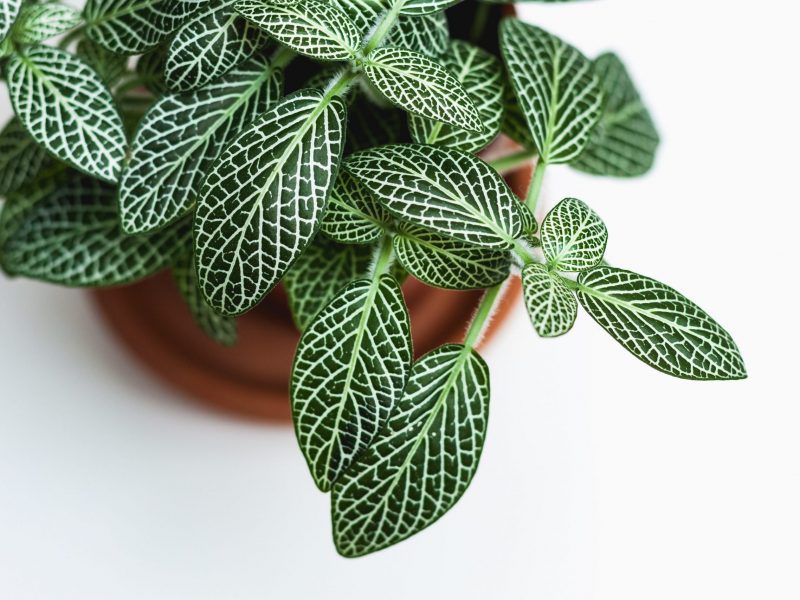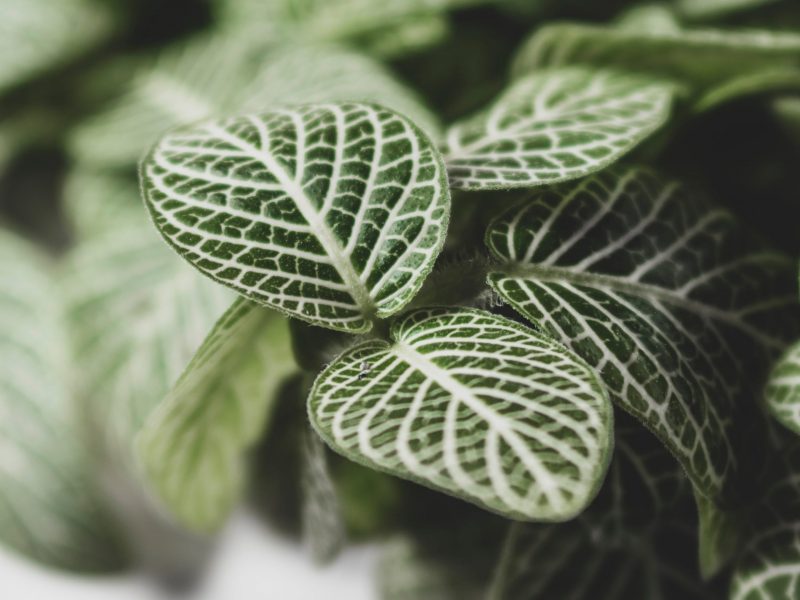
Nerve Plants can be pretty fussy when it comes to their care and environmental requirements so it can often happen that their leaves start curling if something isn’t right. There are quite a few different factors that can all cause your Nerve Plant to develop curling leaves so it’s important to make the right diagnosis so you know what to change.
Below we will go through each of the factors that can cause curling leaves on a Nerve Plant so you’re able to treat the issue and prevent it from happening again in future.
Underwatering can cause curling leaves on your Nerve Plant
If you’re not giving your Nerve Plant enough water, it can start to become dry and the leaves may start to curl up from the edges inwards. It’s important to note that your plant won’t all of a sudden start curling if you forgot to water it for a week but consistent underwatering will start to cause some issues.
Check the soil moisture to confirm that underwatering has caused the leaves on your Nerve Plant to start curling. To resolve the issue, it’s important to water your plant enough so that the potting mix doesn’t stay dry for extended periods of time. As they have very delicate small roots, they can very quickly crisp up without enough moisture.
You will also need to adjust your watering patterns depending on the time of year. In summer, you need to increase the frequency of watering as the warm air and sunlight will dry out your plant quicker than in winter.
Curling leaves can also indicate root rot and overwatering
The main symptoms of root rot are brown patches of the leaves and curling leaves. The reason that overwatering can be so damaging to your plant is that it will start to rot the roots which leaves your plant without needed moisture, oxygen and nutrients.
Check the soil moisture and inspect the root system to confirm the issue but be very careful when removing your plant from its pot as you don’t want to cause any more damage to an already sensitive plant.
If you do spot rotten roots on your Nerve Plant, then trim them away to encourage new healthy roots to grow. Then replace all waterlogged potting mix with fresh dry mix.
To prevent the issue from happening again, there are a few things you can do. Firstly, always ensure that the potting mix has had a chance to dry out and use a moisture meter or the chopstick method to monitor this. You also want to make sure that you are using a well-draining potting mix and that your Nerve Plant’s pot has drainage holes that aren’t blocked by anything. This helps any excess water flow out of the pot.
Overfertilizing can also cause curling leaves
By overfeeding your plant, you are giving it too much of some nutrients like salt or nitrogen which can cause dehydration and can toxify the soil which then causes curling leaves.
To stop the issue from causing more damage to your Nerve Plant, remove any fertiliser spikes or replace the soil completely if you have used pellets or water-soluble fertiliser. Then moving forward, only fertilise during spring and summer and use less than the recommended amount on the bottle.
Temperature extremes can also cause curling leaves
Both extremely high and low temperatures can cause your Nerve Plant to start curling its leaves. Things like radiators, heating vents, AC units and drafty windows can be really damaging to your Nerve Plant over time so it’s important to spot any temperature fluctuations quickly.
Use a digital thermometer to check the temperature next to your Nerve Plant as this will help you figure out if it needs to be moved to a different spot in your home.
Water sensitivity might be to blame
Tap water often contains high levels of chemicals such as salt, chlorine, and fluoride and as Nerve Plants have quite delicate roots and leaves, it can start to cause some problems over time. This is because the excess chemicals can suffocate the roots, starving your plant of moisture, oxygen and nutrients. It won’t often kill your plant but it can start to cause smaller issues such as brown leaf tips and curling leaves.
The best thing to do if you live in a particularly hard water area is to use distilled water or rainwater.
Intense sunlight can cause curling leaves
When your plant receives a high level of sunlight, transpiration processes increase, causing water loss. This leaves your plant quite dehydrated leading to curling leaves.
Luckily, it can be quite an easy fix as you’ll want to find a spot that is shadier and doesn’t receive any direct sunlight. It might also be a case of moving your plant around depending on the seasons as it’s important to maximise the light in winter to prevent leggy growth but protect your plant from intense light in summer.
A pest infestation can also cause curling leaves
Whilst this is rarer than the other issues we have listed above, curling leaves can be caused by pests. This is because they exhaust the leaves by sucking on them, causing them to curl.
Check your plant over to see if you can spot pests on the leaves or signs that they have made your plant their home (you’re looking for brown/yellow spots, holes in the leaves or white powder or webbing).
If you do find pests or signs of them then isolate it from all other plants and check your other plants thoroughly. Then to treat the infestation you want to show your plant, replace the potting mix and treat it with neem oil and an insecticide.
Those are the most common reasons why Nerve Plants develop curling leaves. The key to solving issues with Nerve Plants is catching the problem early as things can progress quite quickly as they have quite small leaves. Therefore, it’s a good habit to get into to check your plant every week or two (when watering is a good opportunity) and this will allow you to spot any early warning signs.
Check out our Nerve Plant care guide to learn more about how to keep your plant thriving!














